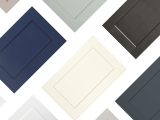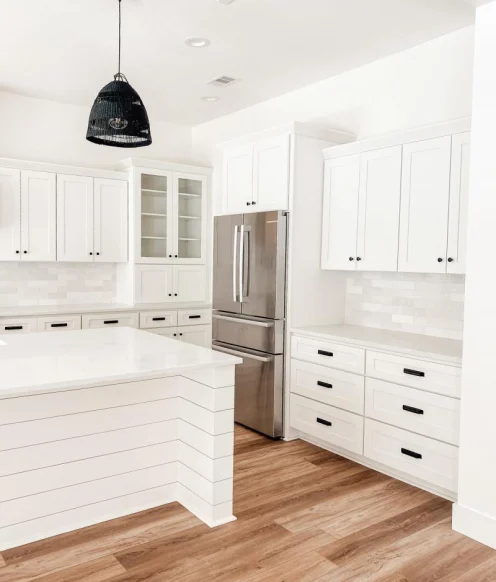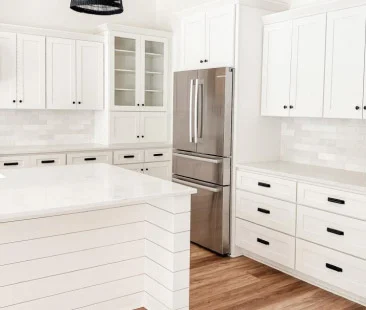Determining Cabinet Quality
It’s easy to tell whether a set of kitchen cabinets are good or bad ten years into their life cycle They’ve either held up well and still look relatively new or they’ve fallen apart, have sagging shelves. But what about when they’re brand new? How can you spot the differences between the good, the bad, and the great?
The Frames
Even though you don’t see them most of the time, the box frames and shelves of your kitchen cabinets are the most critical part of them. Bad cabinets are easy to spot here: they’re made of particle board, and they’re thin; less than half an inch sometimes. The trouble with particle board is that it has more in common with really thick paper than with wood, so if it gets wet frequently, it slowly disintegrates. It also doesn’t hold fasteners very well, and screws tend to strip. Finally, it warps easily, so over time shelves sag, and frames shift and grow increasingly out of true. This can lead to shelves crashing down, unstable dishes, or even the cabinets themselves falling off the wall or collapsing.
You might think good cabinets use hardwood, then, but you’d be wrong. Solid wood can warp over time as well. Instead, good cabinet quality uses plywood, which is made up of thin slices of wood laid atop each other rotated ninety degrees so their grains criss-cross. Each layer resists the warping of the layers around it, meaning it stays true indefinitely. It’s real wood, so it doesn’t disintegrate if it gets wet, and it actually tends to hold fasteners better than solid wood. All of our cabinets are made of furniture-grade plywood, at least half an inch thick, usually three-quarters.
The Finish
Bad cabinets quality also often uses particle board for the doors and drawer fronts. Beyond the problems with particle board we’ve already discussed, the veneer presents some new problems. Have you ever peeled a piece of tape off of a piece of cardboard? It’s all but impossible to do it cleanly, because the bond between the tape and the paper isn’t what gives way. It’s the bond between the cardboard and itself that’s weak. Particle board is exactly the same way, so as they age (especially as they get wet, which the doors and drawer fronts do far more frequently than the interiors), the veneers can start to peel away, leaving a hideous mess after just a few years.
Good cabinets use solid hardwood doors and drawer fronts. Whether painted or stained, hardwood holds its finish well, and resists cuts, cracks, and dents better than most other surfaces. All of our cabinets use genuine hardwood doors and drawer fronts, and feature durable, high-quality finish materials.
So What Makes Great Cabinets?
If you ask us, it’s the combination of cabinet quality and price. Sure you can spend tens of thousands of dollars to have custom cabinets made for you. With nothing more than a screwdriver, wood glue, and a spare weekend, you can assemble top-quality ready-to-assemble cabinets yourself, and save vast swaths of money. What could be better than that?
Shop for high-quality cabinets you can assemble yourself today.











 Refundable Samples →
Refundable Samples → 














